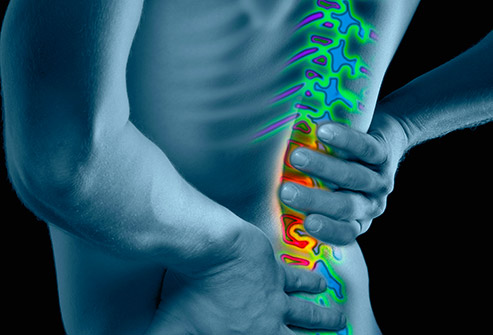Tai Chi
Tai chi (pronounced "tie chee") is an ancient Chinese discipline that integrates mind, body, and spirit. Practitioners use meditation and deep breathing as they move through a series of continuous exercises, called "forms," which resemble slow-moving ballet. Though it originated as a martial art (evolving from qigong), tai chi is now practiced more for its therapeutic benefits, which include reducing stress, promoting balance and flexibility, and even easing arthritis pain.
According to one legend, tai chi was developed in China in the thirteenth century. As the story goes, a man who was a monk and martial arts master invented it after watching a fight between a crane and a snake. Being the bigger and more powerful of the two, the bird appeared to have the advantage. However, the snake's elusive movements enabled it to win. Even today, practitioners who perform tai chi as a martial art use subtle movements to dodge blows and turn an attacker's own momentum against him.
Tai chi is far more than a mode of self-defense, however. For hundreds of years, groups of Chinese people, many of them elderly, have performed its fluid, graceful movements in parks throughout China as a way of staying vital. Today, many people in the United States, Canada, and Europe have become interested in attaining the health benefits of this ancient art as well.
How Does Tai chi Work?
It is believed that tai chi, a component of traditional Chinese medicine (TCM), increases strength and promotes calm and harmony by improving the flow of internal energy (or qi) throughout the body. It is the calming, meditative aspect of tai chi that makes it particularly useful for reducing stress and anxiety. Indeed, people who do tai chi regularly say that it improves their sense of well-being.
As an aerobic exercise, tai chi benefits the entire body, increasing muscle strength and enhancing balance and flexibility. People who practice tai chi are also said to exploit the strength of yin (the earth) and the energy of yang (the heavens) through exercises designed to express these forces in balanced and harmonious form.
Health Benefits of Tai chi?
Tai chi can be used as a preventive health measure, as a way to maintain good health, or to help with a specific ailment. While tai chi cannot cure disease, it is often recommended as a complementary therapy to conventional treatment. Specifically, tai chi can be used to help:
Arthritis. By strengthening the muscles surrounding an arthritic joint and improving flexibility, tai chi increases range of motion without causing pain. Although tai chi cannot treat bone and cartilage damage caused by arthritis, it can lessen the severity and pain of the disease when started early enough.
Balance. Research shows that practicing tai chi improves balance in older people and thus reduces the risk of falling–a major cause of death and disability in the elderly.
Circulation problems. Tai chi may enable the heart to pump more blood with each beat, thereby improving circulation.
High blood pressure. A recent study done at Johns Hopkins Medical Institutions revealed that tai chi lowered blood pressure almost as much as moderate-intensity aerobic exercise in older adults who had been sedentary.
Multiple sclerosis. Preliminary studies suggest that tai chi helps people with MS to increase their physical functioning as well as their mental well-being.
Stress. Although the evidence is limited, some studies have shown that tai chi is as effective as meditation and walking for reducing the amount of stress hormones in the body.
What Can I Expect From Tai chi?
You can learn tai chi privately from a tai chi master or in a class setting. If you are unable to find an instructor or do not have access to classes, you can learn tai chi from books and videos. (Keep in mind that if you opt to learn tai chi on your own, you will not get the valuable benefit of coaching and feedback from an experienced teacher.) You don't need special attire. Wear something you will be comfortable moving around in. Tai chi can be done in shoes or bare feet.
Sessions typically start with some sort of meditation to calm the mind, followed by easy warm-up exercises to get the blood circulating. You will be taught to focus on your dantian–an area in the lower abdomen just beneath the navel–which is the body's center of gravity. This will help you relax and center yourself. Deep breathing (from the diaphragm as opposed to the chest) is a key element of tai chi. You will learn to coordinate your breathing with each movement you make.
After the warm-up, your instructor will teach a series of slow flowing movements that performed together constitute a "form." Forms reflect the natural world and have names like "Crane Spreads Its Wings" and "Grasping the Bird's Tail." An average tai chi routine takes about 10 minutes, but a more advanced form may include up to 100 movements and require as long as an hour to perform.
Doing tai chi is not as easy as it looks. Perfecting the art demands focus and unity of mind, body, and spirit. Practice is essential. Many people make tai chi a regular habit, doing it at the same time every day. You may find tai chi to be an invigorating way to begin your morning or you may wish to do it after work to ease tension built up from the day.
Cautions about Tai chi
- Tai chi is safe for people of all ages and fitness levels. However, if you are older and sedentary, consult your doctor before starting tai chi.
- Tell your instructor if you have any health problems that may compromise your ability to do certain movements.
- Tai chi should not make you ache. If it does, tell your instructor. You should be able to modify your practice so it is pain free.
Choosing a Tai chi Practitioner
Tai chi teachers are not medical professionals and therefore are not licensed. To find a class, try your local YMCA, YWCA, or health club. Colleges, universities, and city recreation departments may also offer classes. If you'd prefer to learn tai chi one-on-one from a tai chi master, contact a martial arts school and ask for recommendations.
Don't commit to anything until you are sure the class or teacher is right for you. Observe a class or take a trial class if it is an option. Talk to the other students in the class and be sure to inquire about the instructor's background and experience.
You can also check the library or a bookstore for books and videos to supplement what you have learned in a class.




